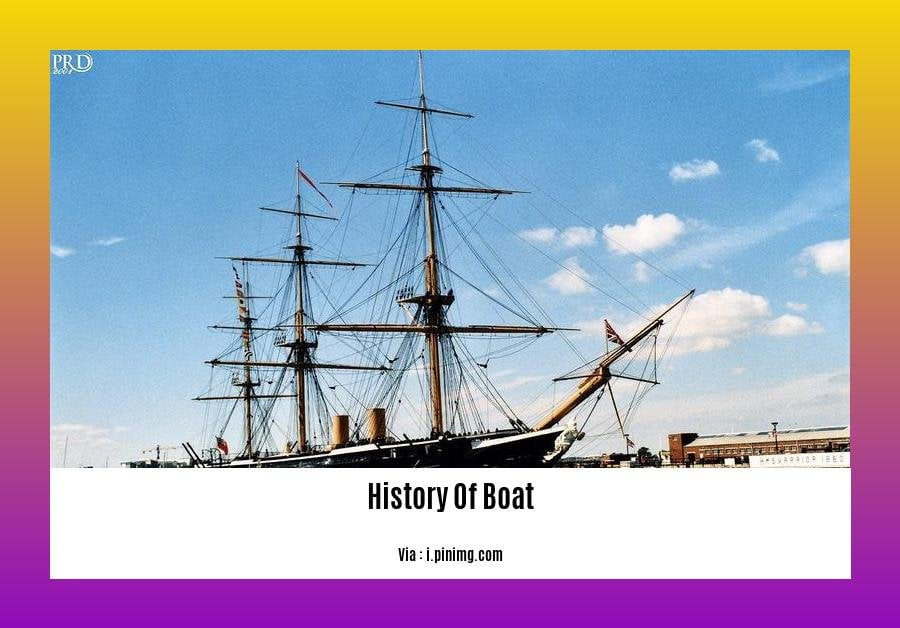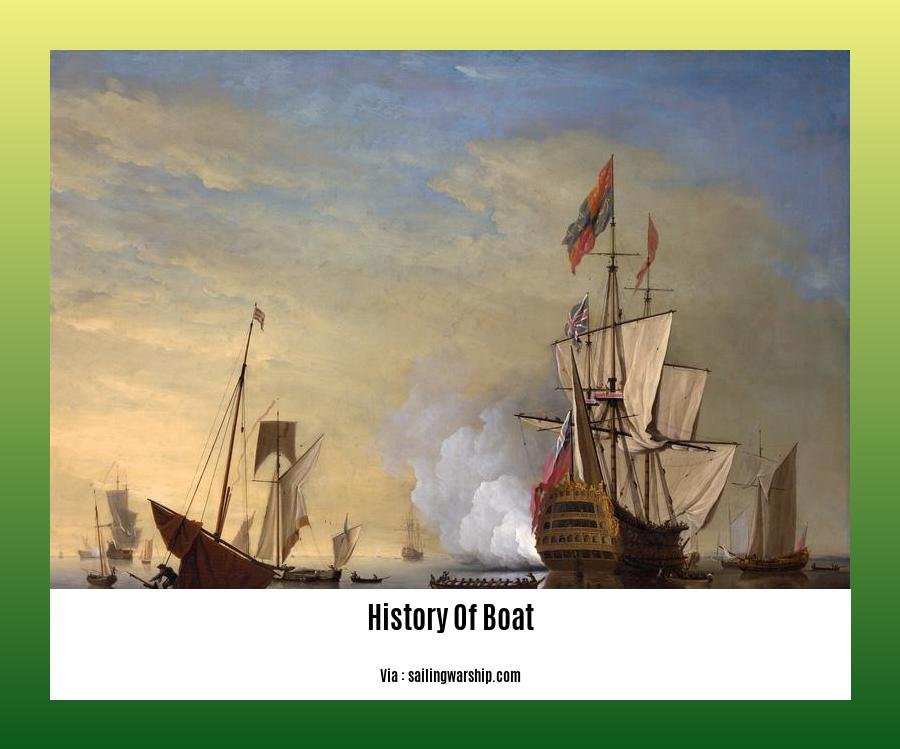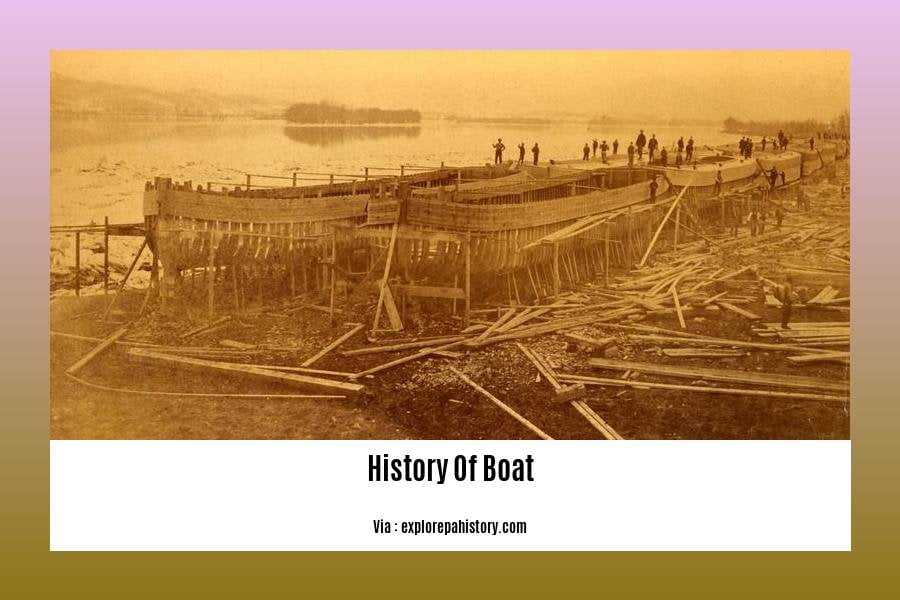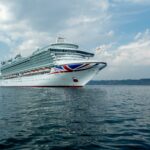Embark on an extraordinary voyage through the annals of maritime history in [The History of Boats: A Journey Through Time and Technology]. From the rudimentary rafts of ancient civilizations to the sleek, technologically advanced vessels of today, this article will unveil the captivating evolution of watercraft. Prepare to immerse yourself in a world of shipwrecks, naval innovations, and the stories of those who dared to conquer the world’s oceans.
Key Takeaways:
Boats are watercraft smaller than ships, used for transportation, fishing, and sport.
Different types of boats are classified by their propulsion methods, which include unpowered, crew-powered, and engine-powered.
In modern naval terms, a boat is small enough to be carried on a ship.
Boat materials have evolved over time, from wood to modern materials like fiberglass and concrete.
A boat comprises essential parts such as the hull, keel, and propulsion system.
The European Union’s Recreational Craft Directive (RCD) regulates the safety and construction of leisure boats and barges in Europe.
History of Boats: A Journey Through Time and Technology

They’ve shaped our world, propelled explorers to new lands, fostered trade, and defended nations – they’re boats, the unsung heroes of history. Their story is an epic journey through human ingenuity and innovation.
Prehistory: The Dawn of Boats
Humans’ earliest maritime adventures began humbly, with rudimentary rafts and canoes crafted from logs, reeds, and animal skins. These simple vessels enabled our ancestors to traverse rivers, lakes, and coastal waters, transforming them into skilled seafarers.
Ancient Civilizations: Masters of Maritime Mastery
Ancient civilizations like the Egyptians, Greeks, and Romans elevated boatbuilding into an art form. The Egyptians sailed the Nile aboard reed boats, while the Greeks and Romans constructed sleek, maneuverable galleys for trade and warfare. These vessels carried empires to greatness and facilitated the growth of maritime trade.
Middle Ages: A Fusion of Cultures and Technologies
The Middle Ages witnessed a fusion of boatbuilding traditions as cultures interacted and exchanged ideas. The Vikings, with their iconic longships, dominated the northern seas, while the Chinese invented the stern rudder, which greatly improved maneuverability. Maritime exploration reached new heights, with the voyages of Christopher Columbus and Vasco da Gama forever changing the course of history.
Age of Sail: The Golden Era of Seafaring
The Age of Sail, from the 15th to the 19th century, marked a pinnacle of maritime achievement. Tall ships like the galleon and the frigate ruled the waves, carrying explorers, traders, and navies across vast oceans. The invention of astrolabes and compasses allowed for accurate navigation, enabling circumnavigations of the globe and the discovery of new lands.
Modern Era: A Revolution in Naval Technology
The Industrial Revolution heralded a new era for boats, with steam power and later internal combustion engines revolutionizing propulsion. Iron, then steel, replaced wood as the primary shipbuilding material, resulting in larger, faster, and more durable vessels. The 20th century witnessed the rise of aircraft carriers, submarines, and hovercrafts, showcasing the boundless creativity of naval engineers.
Throughout history, boats have been the catalysts for exploration, trade, and cultural exchange. They’ve enabled us to conquer vast oceans, connect distant lands, and unravel the mysteries of the underwater world. Their legacy as symbols of human ingenuity and perseverance continues to inspire and captivate us to this day.
Have you ever wondered about the history of blankets, from their ancient origins to the modern-day comfort we take for granted? Delve into the fascinating journey of these essential bed linens that have kept us warm and cozy for centuries.
And if you thought boxing gloves were just a modern invention, think again! Discover the history of boxing gloves and how they evolved from bare-knuckle brawls to the protective gear we see in the ring today.
Materials and Techniques Used in Boat Building
Delving into the realm of boat building unveils a captivating tapestry of materials and techniques that have shaped the history of watercraft. From the earliest rafts to modern marvels of naval engineering, the choice of materials and construction methods has played a pivotal role in the evolution of boats.
Hull Types: A Symphony of Purpose
Hull types, the foundation of any boat, vary depending on the intended purpose of the vessel. Sea-going boats, designed to brave the open waters, often feature deep hulls for increased stability. Inland waterways, on the other hand, call for shallow-draft hulls that can navigate narrow channels and rivers.
Wood: Nature’s Timeless Gift to Boat Building
Wood, nature’s timeless gift to boat building, has been the traditional material of choice for centuries. Its buoyancy, wide availability, and ease of working make it an ideal choice for crafting vessels of all sizes.
Hardwoods: Teak, totara, and certain cedars, renowned for their natural rot resistance, are ideal for small boats.
Softwoods: Pine, larch, and cedar, with their flexibility and affordability, are commonly used for planking.
Marine Plywood: A Modern Marvel for Amateur Builders
Marine plywood, a product of modern innovation, has gained popularity among amateur boat builders. Constructed using waterproof glues and laminates, it offers durability and ease of handling. However, proper sealing is crucial to prevent moisture trapping and subsequent rot.
Techniques: A Craftsman’s Symphony
Boat building techniques, passed down through generations, reflect the ingenuity and craftsmanship of boat builders.
Planking: The process of attaching wooden planks to the boat’s frame, creating a watertight hull.
Caulking: Sealing the seams between planks with a flexible material, such as oakum or modern sealants, to prevent water leakage.
Fastening: Joining planks and structural components using nails, screws, or bolts, ensuring the boat’s integrity.
Finishing: Applying protective coatings, such as paint or varnish, to protect the boat from the elements and enhance its appearance.
Key Takeaways:
- Wood, with its buoyancy and workability, has been the traditional material for boat building.
- Marine plywood, a modern innovation, is popular for amateur construction due to its durability and ease of handling.
- Caulking, a crucial technique, seals the seams between planks to prevent water leakage.
- Fastening techniques, using nails, screws, or bolts, ensure the structural integrity of the boat.
- Finishing touches, such as paint or varnish, protect the boat from the elements and enhance its appearance.
Citations:
Different Types of Boats Throughout History

From humble origins to the marvels of modern-day engineering, boats have traversed the waters, shaping human history, connecting cultures, and driving exploration. Let’s embark on a journey through time, exploring the diverse types of boats that have left an indelible mark on our maritime legacy:
Rowboats: The Forerunners of Maritime Propulsion
Picture a boat propelled by the sheer strength of human arms, gliding across the serene waters. Rowboats, the genesis of waterborne transportation, trace their lineage back to ancient civilizations. These simple yet effective crafts, propelled by oars, were instrumental in fishing, trade, and exploration.
Sailboats: Harnessing the Wind’s Power
Harnessing the wind’s energy, sailboats emerged as a game-changer in maritime history. With sails billowing in the breeze, these vessels traversed vast oceans, revolutionizing trade and exploration. From the sleek fishing boats of the Vikings to the majestic galleons of the Age of Exploration, sailboats left an indelible mark on the course of human history.
Motorboats: The Advent of Mechanical Propulsion
The advent of the internal combustion engine ushered in a new era of watercraft propulsion, giving birth to motorboats. These powerful vessels, powered by gasoline or diesel engines, offered unprecedented speed and efficiency. From sleek speedboats slicing through the waves to sturdy fishing boats battling the elements, motorboats have become an integral part of modern maritime life.
Rafts: The Simplest Form of Waterborne Transport
In the realm of watercraft, simplicity reigns supreme with rafts. Constructed by lashing together logs, reeds, or other buoyant materials, rafts have served as a rudimentary means of water transport since prehistoric times. From basic fishing platforms to elaborate vessels used for long-distance travel, rafts have played a vital role in human interaction with water.
Canoes: Graceful Vessels Born from Nature
Canoes, with their sleek, lightweight design, have seamlessly blended with nature’s waterways for centuries. Carved from the trunks of trees, these elegant vessels epitomize the harmony between human ingenuity and the natural world. Whether used for hunting, fishing, or navigating rivers and lakes, canoes continue to captivate with their timeless charm and versatility.
Key Takeaways:
- Rowboats, the pioneers of maritime propulsion, paved the way for waterborne travel.
- Sailboats, harnessing the wind’s power, transformed trade and exploration.
- Motorboats, powered by engines, ushered in an era of speed and efficiency.
- Rafts, the simplest form of water transport, have endured since prehistoric times.
- Canoes, carved from nature, symbolize the fusion of human ingenuity and the environment.
Additional Noteworthy Vessels:
- Cockboats: Small rowboats used for transporting passengers and cargo between ships and the shore.
- Admiral’s Barge: An elaborate rowboat reserved for the use of high-ranking naval officers.
Sources:
Impact of Boats on Society and Culture
Throughout history, boats have played a pivotal role in shaping human societies and cultures. From humble beginnings as simple rafts to the sophisticated vessels of today, boats have revolutionized exploration, trade, warfare, and cultural exchange. Their impact is deeply intertwined with our collective narrative, leaving an indelible mark on the tapestry of human civilization.
1. Exploration and Discovery:
- Boats have enabled us to traverse vast oceans and waterways, leading to the discovery of new lands, cultures, and resources.
- Maritime exploration has fueled scientific advancements, expanded our understanding of the world, and facilitated global connectivity.
2. Trade and Commerce:
- Boats have served as vital conduits for trade, transporting goods and commodities across oceans and rivers.
- Maritime trade routes have fostered cultural exchange, spurred economic growth, and connected diverse civilizations.
3. Warfare and Conflict:
- Boats have been instrumental in naval warfare, shaping the course of history through battles and conquests.
- The development of warships and navies has influenced geopolitical power dynamics and territorial disputes.
4. Cultural Exchange and Migration:
- Boats have facilitated the movement of people across vast distances, leading to cultural diffusion and the blending of traditions.
- Maritime migrations have shaped the demographics of nations and contributed to the diversity of languages, religions, and customs.
5. Leisure and Recreation:
- In modern times, boats have become symbols of leisure and recreation, offering opportunities for fishing, sailing, and water sports.
- Recreational boating has fostered a thriving industry and contributed to tourism and coastal economies.
Key Takeaways:
- Boats have facilitated exploration and discovery, expanding our knowledge of the world.
- Maritime trade has fueled economic growth and fostered cultural exchange.
- Naval warfare has shaped geopolitical power dynamics and territorial disputes.
- Boats have facilitated cultural exchange and migration, contributing to the diversity of nations.
- Recreational boating has become a popular pastime, contributing to tourism and coastal economies.
Relevant URL Sources:
FAQ
Q1: How did boat building evolve over time?
A1: Boat building techniques have evolved significantly over time, from simple dugout canoes in prehistoric times to the use of wood, fiberglass, and concrete in modern times. Different hull designs and propulsion methods have also been developed to meet specific needs and purposes.
Q2: What were the earliest forms of boats?
A2: The earliest forms of boats were likely simple dugout canoes made by hollowing out a single tree trunk. These canoes provided basic transportation and fishing capabilities in sheltered waters.
Q3: How did boats impact cultural development?
A3: Boats have played a crucial role in cultural development by facilitating trade, exploration, and the spread of ideas and technologies across regions. They enabled the establishment of maritime trade routes, leading to cultural exchange and the growth of civilizations.
Q4: What are some notable boat designs from history?
A4: Some notable boat designs from history include the ancient Egyptian reed boats, the Viking longships, the Chinese junks, and the European cogs. Each of these designs reflects the unique needs and technological advancements of their respective cultures.
Q5: How has recreational boating evolved?
A5: Recreational boating emerged in the 19th century with the introduction of yachting among the wealthy. It gradually became more accessible to the general public with the development of affordable motorboats and the growth of boating clubs and marinas. Today, recreational boating is a popular pastime enjoyed by people of all ages.
- SYBAU See You Baby Meaning: Gen Z Slang Evolves - July 1, 2025
- Unlock Your Inner Youth: Lifestyle Secrets for a Vibrant Life - July 1, 2025
- Decode SYBAU Meaning: Gen Z Slang Explained - July 1, 2025






